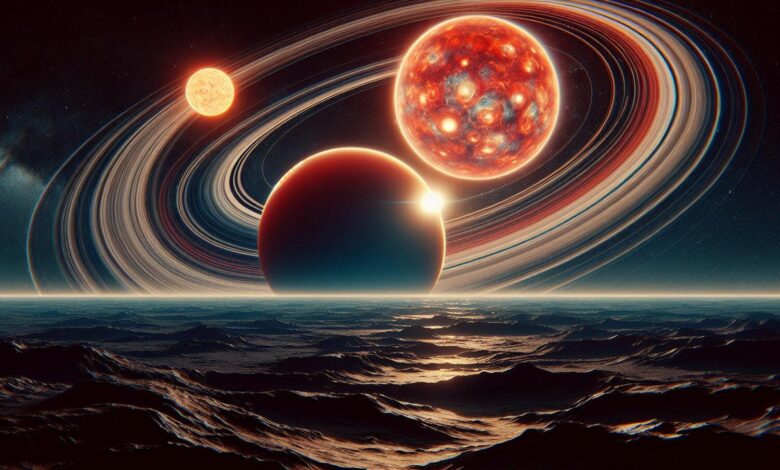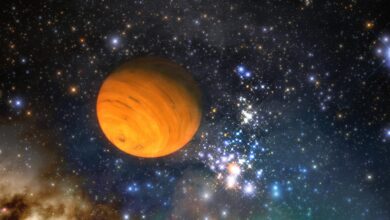
The famous disordered three-body problem, which explains how three bodies interact under the force of gravity, has puzzled scientists for centuries. Now, a new study shows that these conditions are not as chaotic as scientists think.
When solutions to the three-body problem are plotted based on the initial positions of the three objects relative to each other, islands of stability emerge from the chaos, the researchers report in the September issue of the journal Astronomy & Astrophysics. According to them, these islands can help scientists identify colliding black holes.
Gravitational interactions between two bodies can be reliably described using Eqs. But when a third object is added to this system, things get messy, the movements of the objects become unpredictable and often end with one of the objects falling out of the system. Even small changes in their initial mass, velocity, or position can lead to very different outcomes.
In general, researchers use statistics to predict how likely it is that each of the three objects will be ejected from the system. But when Alessandro Trani, a physicist at the Niels Bohr Institute in Denmark, and his colleagues ran computer simulations of the three-body problem, their results did not match statistical predictions.
Trani and his colleagues’ experiments began with a binary system (two objects rotating together) that were approached by a third object from somewhere else in space.
In more than a million simulations, the researchers varied the positions of two objects in the binary system and the angle at which the third object approached the system. They then allowed the three objects to interact until eventually one of them was ejected from the system.
In a system that is completely disordered, even a small change in the position or angle of the three objects can determine which object is ejected from the system. But Trani and his colleagues found several ranges of positions and angles where one of the objects was always ejected from the system. These islands of order challenge the chaos of the three-body problem.
Non-turbulent regions can complicate scientists’ predictions of how three bodies interact in space. The predictions that scientists usually use for these astronomical interactions depend on statistics, but according to Trani, statistical calculations alone are not effective in solving problems that include both irregular and regular regions.
Trani told LiveScience that we need to have a combination of statistical predictions for chaotic space and a combination of ordered or deterministic mechanical theories for ordered space, and we also need to know how to combine the results. The most difficult part is to find out where the three-body problem is chaotic and where it is orderly without simulation.
Finding stable regions can also help scientists identify and understand the gravitational waves that are emitted when black holes interact or merge. Interactions between three black holes, which are relatively abundant in star clusters, can cause two black holes to move toward each other. But predictions of these events include only those caused by chaotic interactions. According to Trani, there may be non-chaotic interactions among the three black holes, which would provide more opportunities to study gravitational waves.









